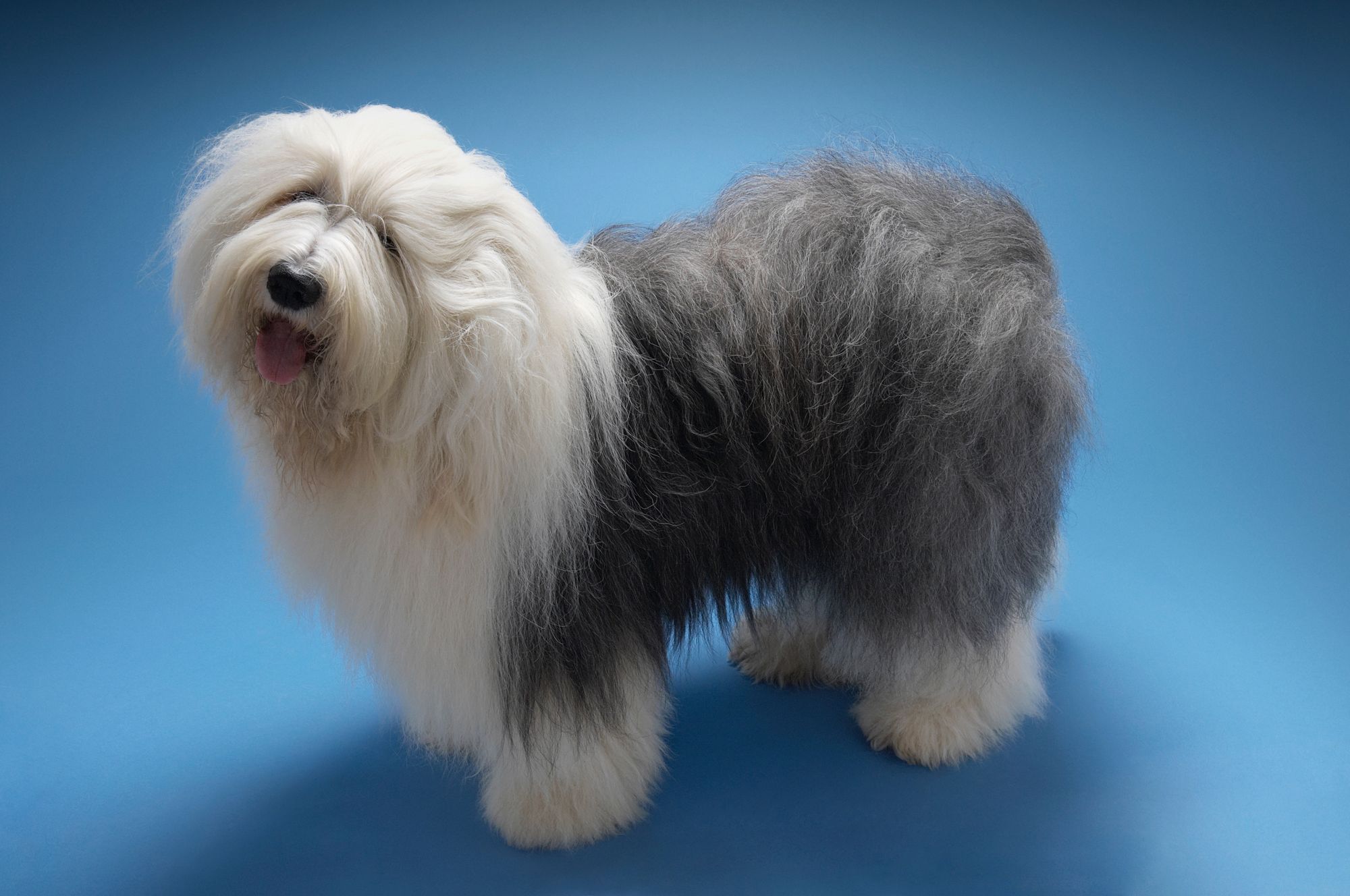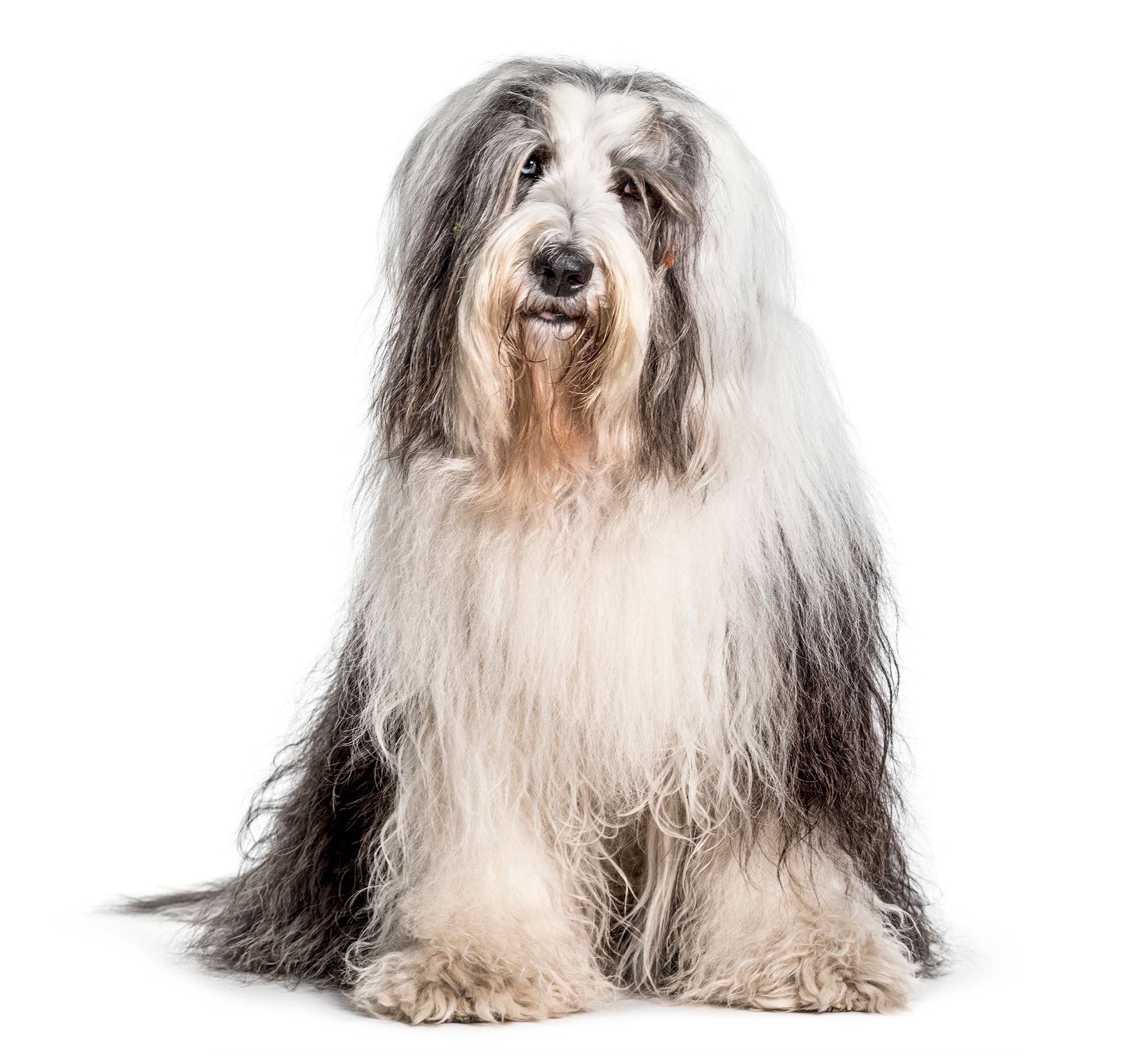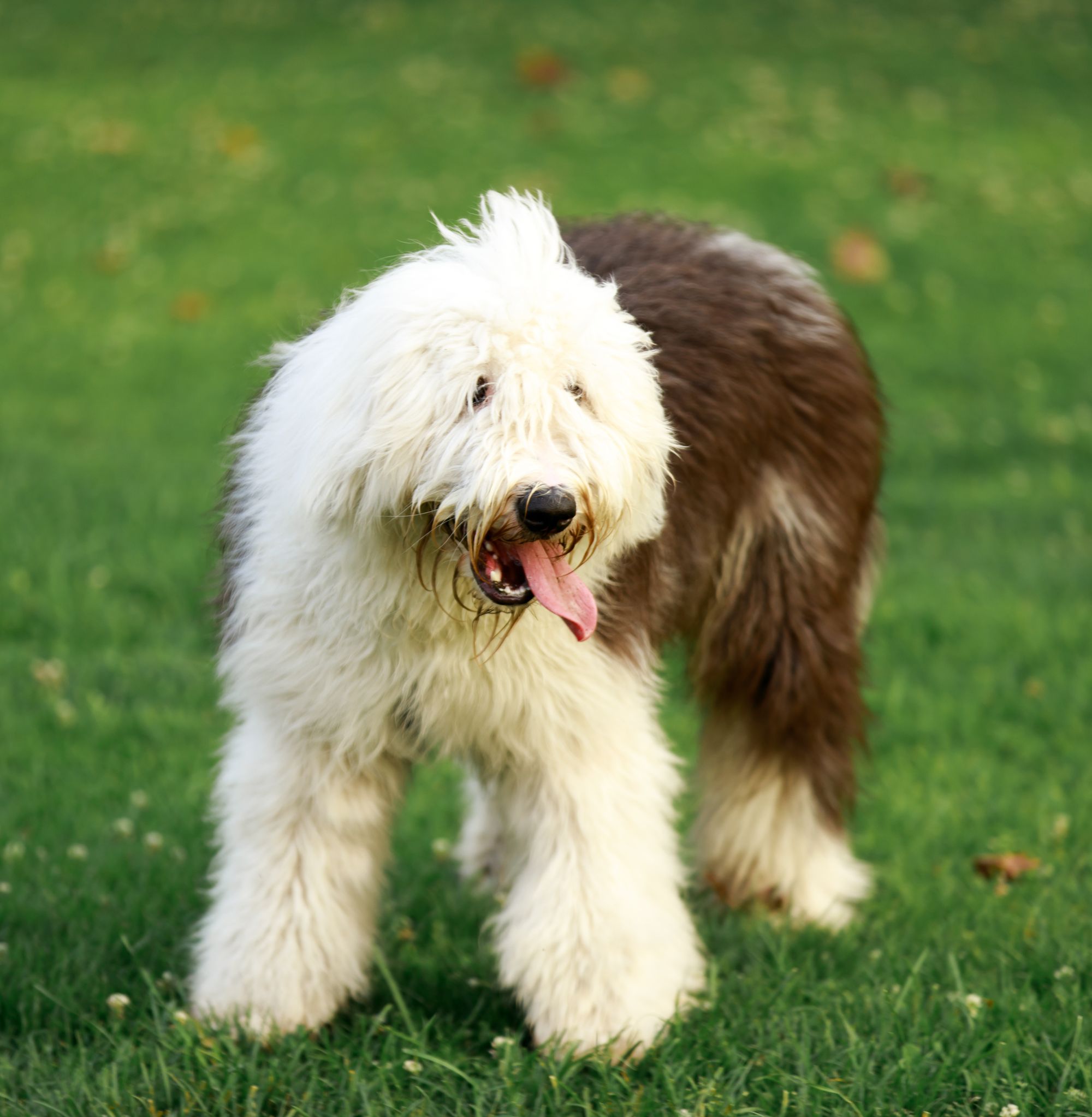The Old English Sheepdog, with its iconic shaggy coat and charming demeanor, is a breed that has captured the hearts of dog enthusiasts for generations. This distinctive breed is known for more than just its striking appearance; it has a rich history, remarkable temperament, and a host of endearing qualities that make it a cherished member of countless families. In this article, we'll explore everything you need to know about the Old English Sheepdog, from its physical characteristics to its historical significance and modern-day appeal.

Physical Characteristics
The Old English Sheepdog, often affectionately referred to as the "Bobtail," boasts an array of distinctive physical characteristics that set it apart as a truly unique breed.
1. Coat Appearance and Texture
One cannot discuss the Old English Sheepdog without immediately noticing its most defining feature – its luxuriously dense coat. Cascading in long, flowing locks, this double-layered fur serves both functional and aesthetic purposes. The outer coat is comprised of coarse, waterproof hair, while the inner layer provides insulation against harsh weather conditions.
The dog coat color can vary, with combinations of gray, grizzle, blue, or merle, often accompanied by white markings. The distinct absence of any solid colors gives the breed its unmistakable appearance. Remarkably, the Old English Sheepdog's coat can grow so long that it conceals its eyes, adding to its endearing charm.

2. Size and Weight
Beyond its captivating coat, the Old English Sheepdog possesses a robust and substantial build. It is classified as a large breed, with males typically standing between 22 to 24 inches (56 to 61 centimeters) at the shoulder and females slightly smaller. These dogs are not just tall; they also exhibit impressive weight, ranging from 60 to 100 pounds (27 to 45 kilograms). This stature, coupled with their solid build, makes them well-suited for their historical role as herding dogs.
3. Notable Facial Features
The facial features of the Old English Sheepdog are as captivating as the rest of its appearance. Their eyes, often concealed by their shaggy mane, are dark and expressive. They radiate intelligence and curiosity, offering a glimpse into the lively mind that lies beneath the furry exterior.
Furthermore, the breed's trademark expression is accentuated by its well-defined eyebrows and bushy mustache. These facial features, combined with their compact, square-shaped muzzle, contribute to their slightly comical yet irresistible appearance.
In summary, the Old English Sheepdog's physical characteristics are a testament to its adaptability and historical significance. Its distinctive coat, substantial size, and charming facial features have made it a beloved breed for centuries. Whether you're captivated by its iconic shaggy coat or its soulful eyes, the Old English Sheepdog is a breed that leaves a lasting impression.
Temperament and Behavior
The Old English Sheepdog, with its iconic appearance, is more than just a pretty face. This breed is renowned for its exceptional temperament and behavior, making it a cherished companion for countless dog lovers.
1. Friendly and Affectionate Nature
At the core of the Old English Sheepdog's temperament is its unmistakable friendliness and affectionate disposition. These dogs have a knack for forming deep emotional bonds with their owners, earning them a reputation as loyal and loving companions.
Their welcoming nature extends not only to their human family but also to strangers and other animals. They tend to be sociable and approachable, often exuding an air of warmth that makes them instant favorites among those they encounter.
2. Intelligence and Trainability
Beyond their charming personality, Old English Sheepdogs are known for their remarkable intelligence. This breed ranks high on the canine IQ scale, which makes them highly trainable. They are quick learners and readily respond to positive reinforcement training methods.
Their intelligence, combined with their eagerness to please, makes them well-suited for various activities and roles. Whether it's obedience training, agility competitions, or even herding tasks, these dogs excel when provided with mental stimulation and challenges.
3. Natural Herding Instincts
The Old English Sheepdog's historical role as a herding dog has left an indelible mark on its behavior. While they may not be herding livestock today, their instincts are still very much present. You might notice your Old English Sheepdog attempting to round up family members, particularly children, as a remnant of their herding past.
These instincts can manifest in amusing ways, such as gentle nipping at heels or nudging, all done with the intent of keeping their "flock" together. While this behavior is typically harmless, it underscores their heritage as diligent and attentive workers.
Exercise and Care
Owning an Old English Sheepdog entails a commitment to their well-being, encompassing not only exercise requirements but also grooming and health considerations.

1. Activity Requirements
Old English Sheepdogs are not couch potatoes. They are an active breed that thrives on exercise and mental stimulation. Daily walks, playtime in a secure area, and engaging activities are essential to keep them happy and healthy. They have a playful disposition, and regular exercise helps channel their energy in positive ways.
Beyond physical activity, mental stimulation is equally crucial. Puzzle toys, obedience training sessions, and interactive games are effective ways to keep their sharp minds engaged. Neglecting their mental needs can lead to boredom-related behaviors.
2. Grooming Needs
The hallmark of the Old English Sheepdog is its magnificent coat, but this beauty comes with a grooming commitment. Their dense, long fur requires regular attention to prevent matting and skin issues. Brushing several times a week is necessary to keep their coat in good condition.
Occasional baths are also part of the grooming routine, with a focus on using dog-specific shampoos and conditioners to maintain the integrity of their fur. Trimming around the eyes and paws can improve their comfort and prevent debris from accumulating.
Trimming their nails, cleaning their ears, and dental care should not be overlooked either. Neglecting these aspects of grooming can lead to discomfort and potential health problems.
3. Health Considerations
Old English Sheepdogs are generally healthy dogs, but like all breeds, they are prone to certain health issues. Some common concerns include hip dysplasia, cataracts, progressive retinal atrophy, and skin conditions.
Regular veterinary check-ups are essential to monitor their overall health and catch any potential issues early. Responsible breeding practices can also reduce the risk of hereditary conditions.
In conclusion, caring for an Old English Sheepdog involves a combination of exercise, grooming, and vigilance over their health. Meeting their physical and mental needs ensures that they lead happy, healthy lives and continue to bring joy to their owners.
Historical Significance
The Old English Sheepdog's history is steeped in the annals of sheep herding, but its significance extends far beyond the pastures.
1. Role in Sheep Herding
Originating in the British Isles, the Old English Sheepdog was bred for a specific purpose – herding livestock. Their distinctive appearance, particularly their shaggy coats, played a practical role in their work. They could blend in with the sheep and protect them from predators. Their large, imposing presence also served as a deterrent to would-be threats.
These dogs displayed not only an innate ability to herd but also remarkable intelligence and problem-solving skills, making them indispensable to shepherds.
2. Evolution of the Breed
Over time, the role of the Old English Sheepdog expanded beyond the herding fields. The breed's charming personality and unique appearance captured the hearts of those outside the farming community. This transition from working dog to beloved family pet was a testament to their adaptability and endearing nature.
The breed's name itself, "Old English Sheepdog," reflects its historical roots, harkening back to the days when sheepdogs were indispensable on English farms.
3. Famous Appearances in Media
The Old English Sheepdog's fame extends to the world of entertainment and advertising. They have graced the silver screen and television with their charismatic presence. Perhaps one of the most famous Old English Sheepdogs in pop culture is the Dulux dog, featured in advertisements for a well-known paint brand for decades.

Popularity and Recognition
The Old English Sheepdog, with its striking appearance and amiable disposition, has not only won the hearts of countless individuals but has also achieved recognition from breed clubs and enthusiasts.
1. Popularity Trends
Over the years, the Old English Sheepdog has experienced fluctuations in popularity. Initially bred as a working dog, its rise to prominence as a cherished companion animal began in the mid-20th century. Its unique appearance, combined with its friendly temperament, made it a sought-after breed for families and dog enthusiasts.
Despite occasional fluctuations, the breed maintains a consistent level of popularity, thanks to its enduring charm and adaptability. While it may not be among the most commonly owned breeds, its devoted fan base ensures its continued recognition and appreciation.
2. Recognition by Breed Clubs
Breed clubs and organizations play a crucial role in promoting and preserving the Old English Sheepdog's unique characteristics. The American Kennel Club (AKC) and the Old English Sheepdog Club of America (OESCA) are among the organizations dedicated to the breed's well-being.
These clubs provide resources for breeders and owners, offer guidance on responsible ownership, and organize events such as dog shows and trials. Their efforts not only help maintain breed standards but also contribute to the breed's visibility and recognition.
3. Unique Characteristics That Attract Owners
What sets the Old English Sheepdog apart and continues to draw admirers are its one-of-a-kind characteristics. Its playful demeanor, intelligence, and shaggy coat make it a standout choice for those seeking a distinctive and lovable companion.
Owners are often captivated by the breed's ability to form strong bonds with their families. Their gentle nature, combined with their protective instincts, endears them to those looking for a loyal and devoted pet.
In conclusion, the Old English Sheepdog's popularity and recognition may have evolved over time, but its unique qualities ensure its enduring appeal. From devoted breed clubs to its distinctive attributes, this breed continues to hold a special place in the hearts of happy dog lovers worldwide.
Owning an Old English Sheepdog
Bringing an Old English Sheepdog into your life is a rewarding experience, but it comes with responsibilities and considerations that potential owners should be aware of.

1. Ideal Living Conditions
Old English Sheepdogs thrive in environments that provide ample space to move and play. While they can adapt to apartment living with regular exercise, a spacious yard or access to open areas is ideal. Their active nature requires room to roam and explore.
2. Feeding Recommendations
Proper nutrition is essential to ensure the health and well-being of your Old English Sheepdog. Consult with your veterinarian to determine the best diet for your dog's age, size, and activity level. Be mindful of portion control to prevent overfeeding, as obesity can be a concern in this breed.
3. Socialization and Training Tips
Early socialization is crucial for Old English Sheepdogs to develop well-rounded personalities. Expose them to various people, animals, and environments to ensure they grow into confident and friendly adults.
Training should be positive, consistent, and reward-based. These intelligent dogs thrive on mental challenges and will eagerly respond to commands and tasks. Obedience training helps channel their herding instincts in a positive direction.
4. Common Misconceptions
There are some misconceptions about owning an Old English Sheepdog, such as concerns about their grooming needs or herding tendencies causing issues in a household setting. While grooming requires commitment, and herding instincts may lead to playful behaviors, these challenges can be managed with proper care and training.
5. Adaptability to Different Lifestyles
Old English Sheepdogs are known for their adaptability to various lifestyles. They make excellent family pets, offering loyalty and protection. They also get along well with other animals, making them suitable for households with multiple pets. Their friendly and sociable nature extends to individuals, couples, and families alike.
Notable Old English Sheepdogs
Throughout history, some famous individuals have shared their lives with Old English Sheepdogs. Their stories and influence have contributed to the breed's enduring appeal.
Breeding and Puppies
Finding a reputable breeder is crucial when considering an Old English Sheepdog puppy. We'll provide tips on how to ensure you're getting a healthy puppy and discuss the challenges that may arise during the early stages of ownership.
Fun Facts
Old English Sheepdogs have a range of interesting quirks and behaviors that set them apart from other breeds. Discover some fun facts that make this breed even more endearing.
Adaptability to Different Lifestyles
From families to singles, Old English Sheepdogs have the versatility to fit into various lifestyles. Learn why they're the perfect companion for different individuals and households.
Old English Sheepdog in Modern Times
Despite their historical role as herders, Old English Sheepdogs continue to play various roles in modern society, from show dogs to therapy animals. We'll explore how they've adapted to contemporary life.
Endearing Old English Sheepdog Stories
Nothing captures the essence of the Old English Sheepdog better than heartwarming anecdotes and experiences shared by owners who have formed special bonds with this breed.
Conclusion
In conclusion, the Old English Sheepdog is more than just a fluffy face. It's a breed with a storied history, exceptional temperament, and a place in the hearts of countless families around the world. Whether you're drawn to their charming appearance, intelligence, or their ability to form deep connections, this breed has something for everyone.
Frequently Asked Questions (FAQs)
Q1. Are Old English Sheepdogs good with children?
- Yes, they are known for their gentle nature and are usually great with kids.
Q2. How often do Old English Sheepdogs need grooming?
- Their dense coat requires regular grooming, ideally several times a week.
Q3. Do Old English Sheepdogs shed a lot?
- Yes, they are moderate to heavy shedders, especially during seasonal changes.
Q4. Are Old English Sheepdogs prone to any health issues?
- They can be prone to hip dysplasia, cataracts, and certain skin conditions. Regular vet check-ups are important.
Q5. Can Old English Sheepdogs adapt to apartment living?
- While they are large dogs, they can adapt to apartment living if they get enough exercise and mental stimulation.